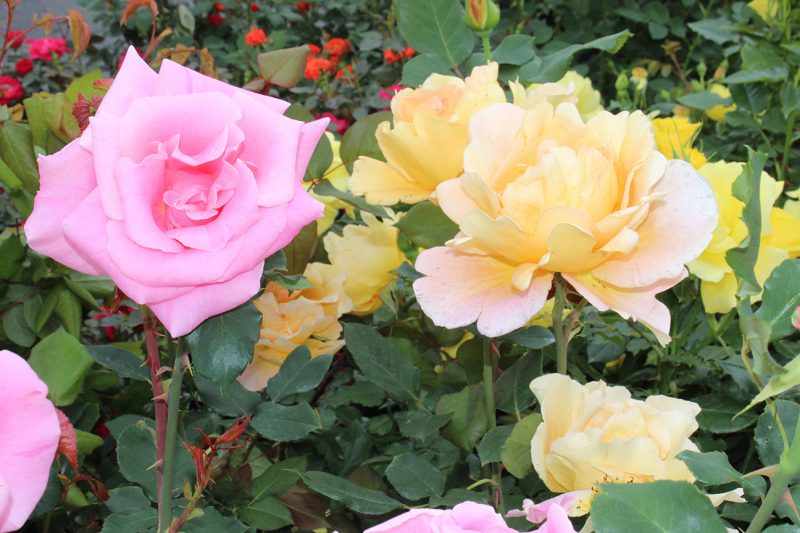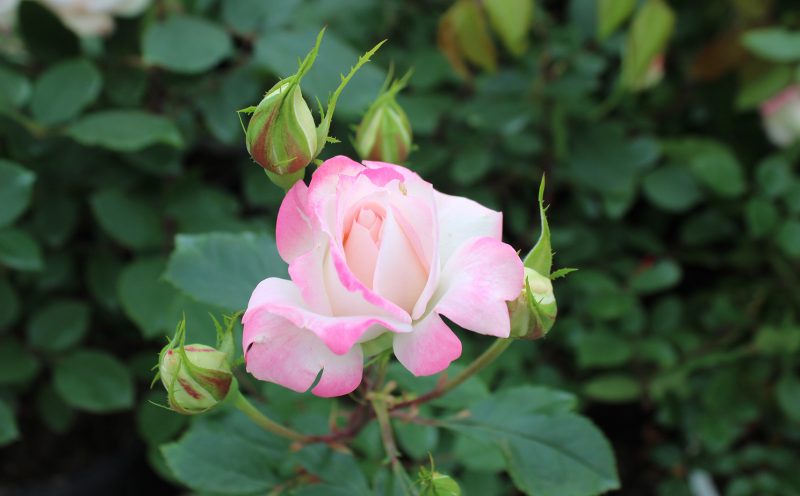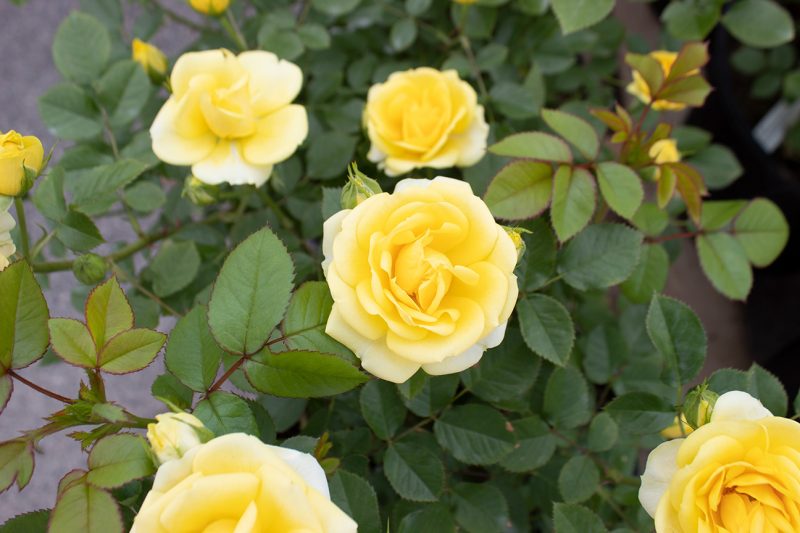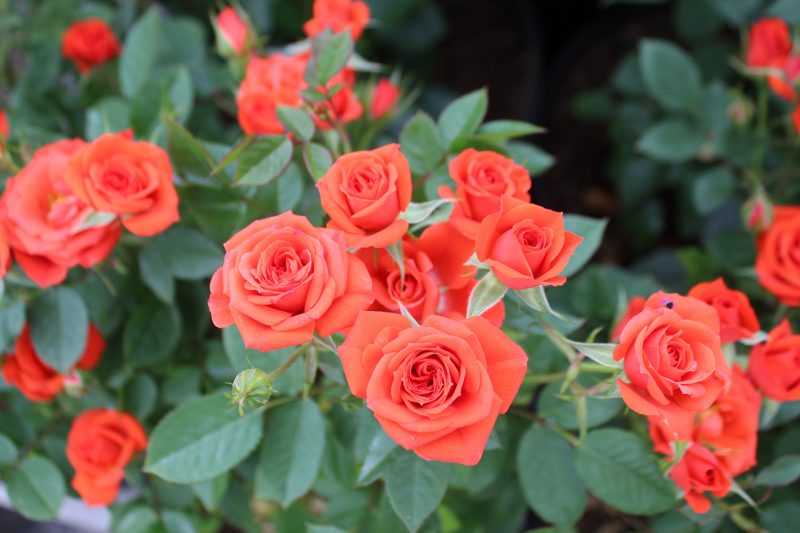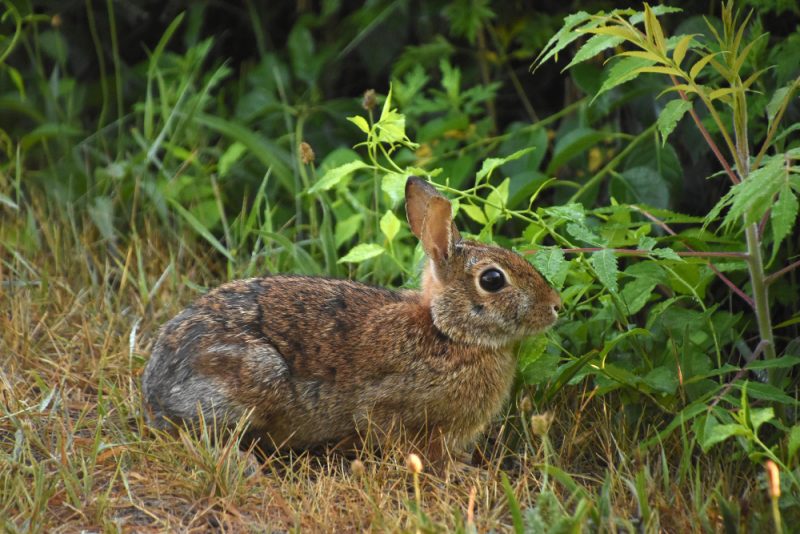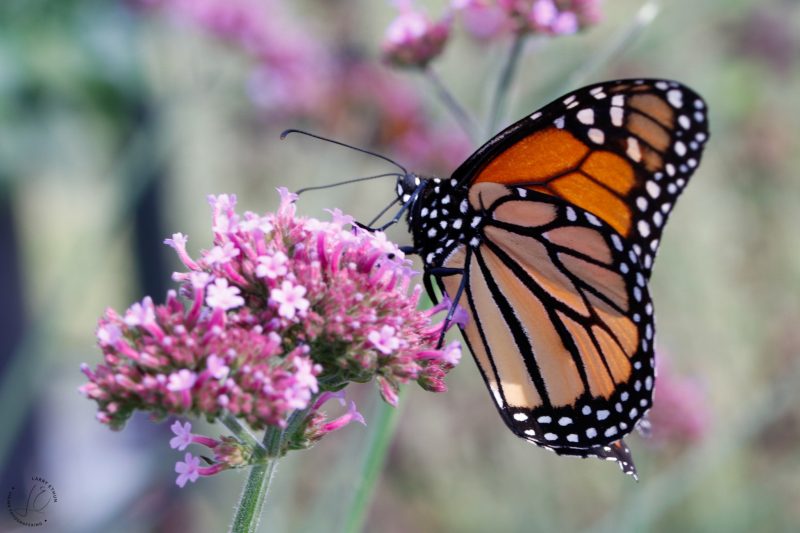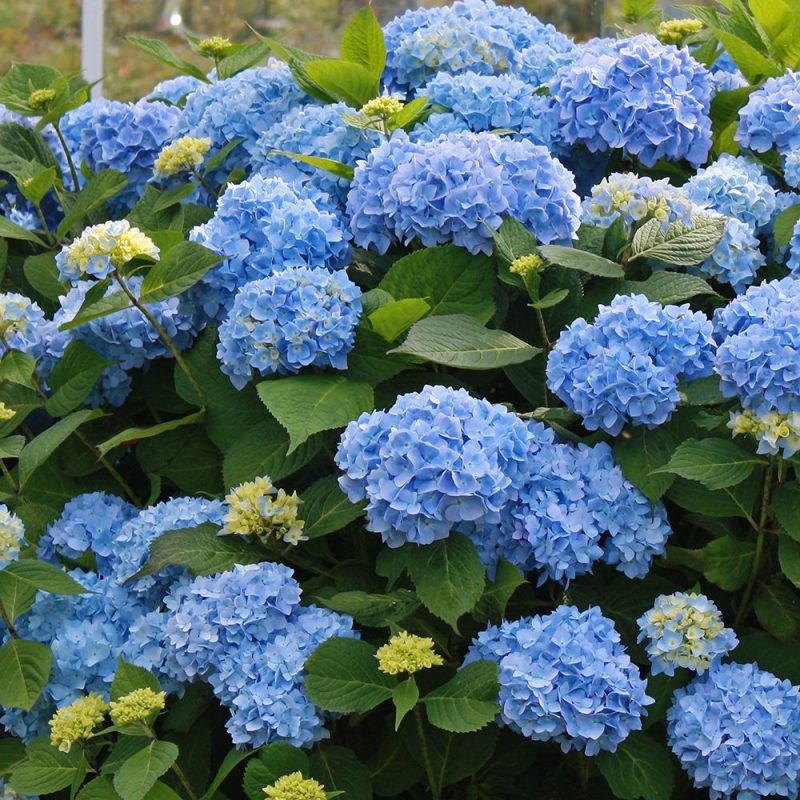Climbers need little or no pruning the first two years. Many of the older climbing varieties tend to bloom on second-year canes. If it has been pruned back each year like hybrid teas and other shrub roses then bloom production will be minimal. Plan on pruning climbing roses every three or four years. At this time, remove small, twiggy canes and old, woody, less vigorous canes at the base of the plant in favor of the young, vigorous canes that are long and flexible
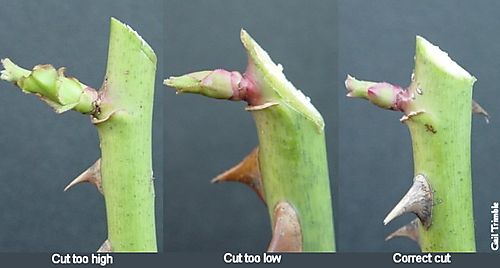
Many gardeners prune their climbing roses, for maintenance and shape, in the spring after the first blooms pass. As a result of proper pruning, your climbers will be significantly stronger and will produce many more blooms!
Note: Most climbing roses (hybrid teas) bloom two or more times every season: first on old canes, and then on the current season’s growth. If you prune in late winter (about the time forsythia blooms), you’ll get boatloads of blooms later in the season. For old-fashioned climbers that only bloom once in the summer, prune just after blooming has stopped.
When it’s time to prune, remove any dead, diseased, damaged, or crossing canes, and canes that are narrower than a pencil. When all you’ve got is main canes left, cut back the side shoots from these main canes to about 2-3 inches to keep them in line. The photo above shows the correct angle and place to cut on the cane.
Tip: Wipe your pruning tools with rubbing alcohol between each cut. This helps prevent the spread of disease when pruning, while also caring for your tools. After use, wash pruning tools with a mild soap, rinse, and towel-dry.
As always, deadhead your climbers to keep them blooming, but just until fall — allowing hips to develop helps the plant enter dormancy, which will help it overwinter properly.


